9 Days 8 Nights
Daily Tour
50 people
___
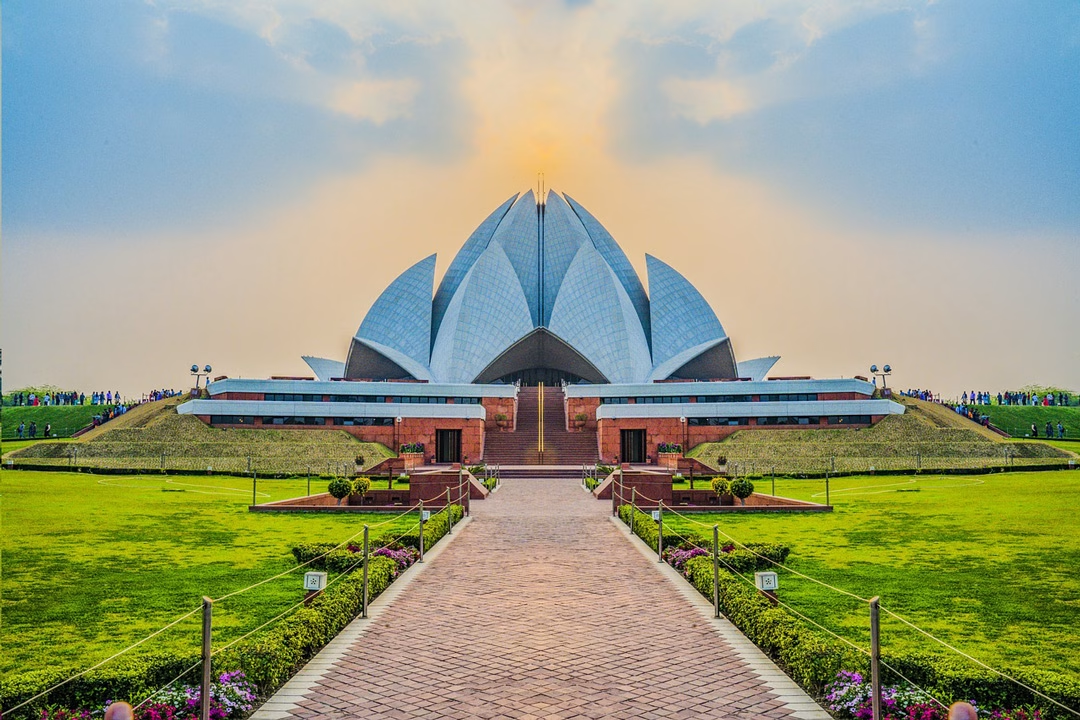
Dist: 529 km | Time: 12 to 16 hr | Altitude: 300 m to 2050 m You will drive from Delhi in the evening and begin your overnight journey towards Manali. It will take around 10 to 16 hours to reach Manali the following Day. Sit back, relax, and enjoy the scenic drive through the winding mountain roads. Meals: Nil Overnight: Journey by Volvo Bus or Cab
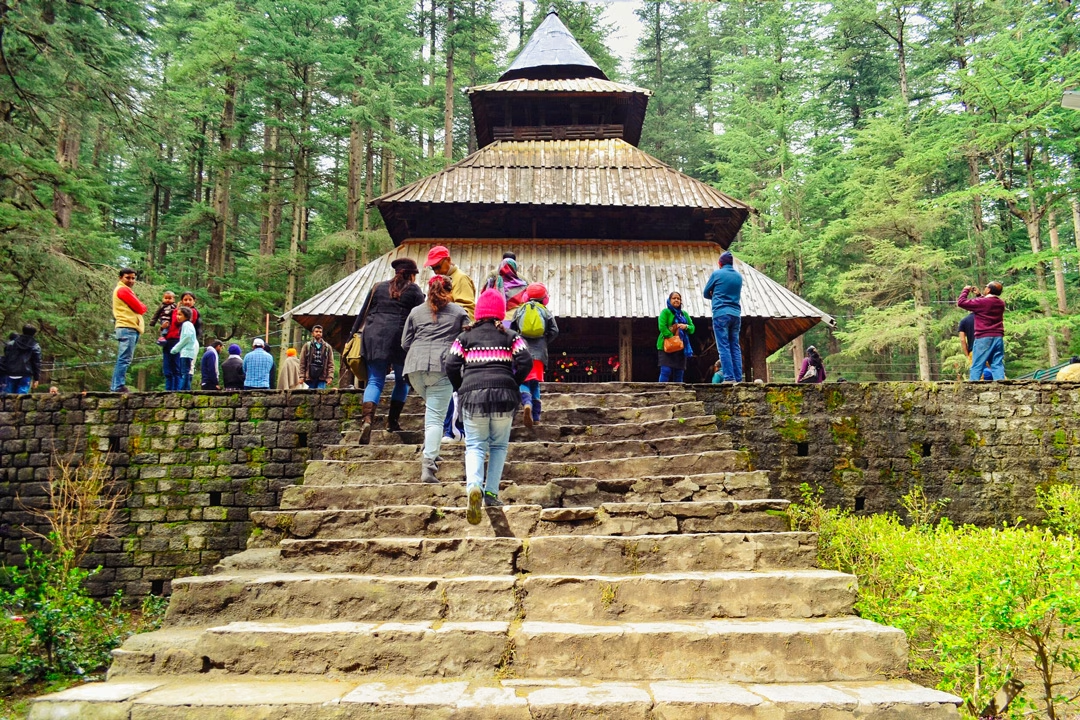
Check-In: 11:00 am | Sightseeing: 2:00 pm to 6:00 pm After reaching Manali, you will check into the hotel and gear up to explore the beautiful city. In the evening, you can explore nearby attractions such as Mall Road, Hadimba Temple, Forest Park, Old Manali, and Club House. Meals: Dinner Overnight: Stay at a Hotel in Manali
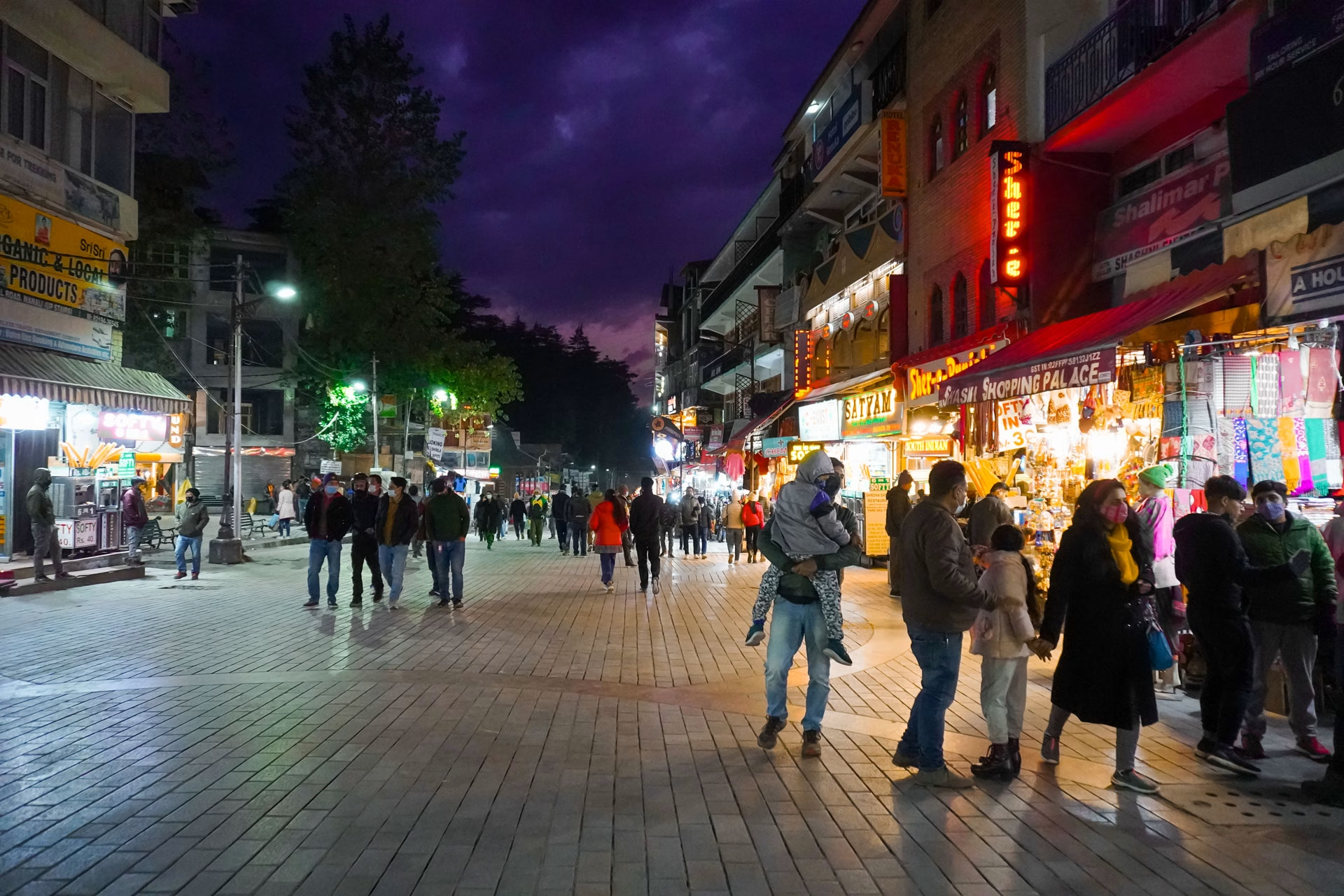
Sightseeing Time: 10:00 am to 6:00 pm After breakfast, you'll drive to the stunning Solang Valley, where you can engage in adventure activities (excluded from the package) like quad biking, skiing, and ziplining. Later, you'll visit the Vashisht Temple and Jogini Waterfalls. Meals: Breakfast and Dinner Overnight: Stay at a Hotel in Manali
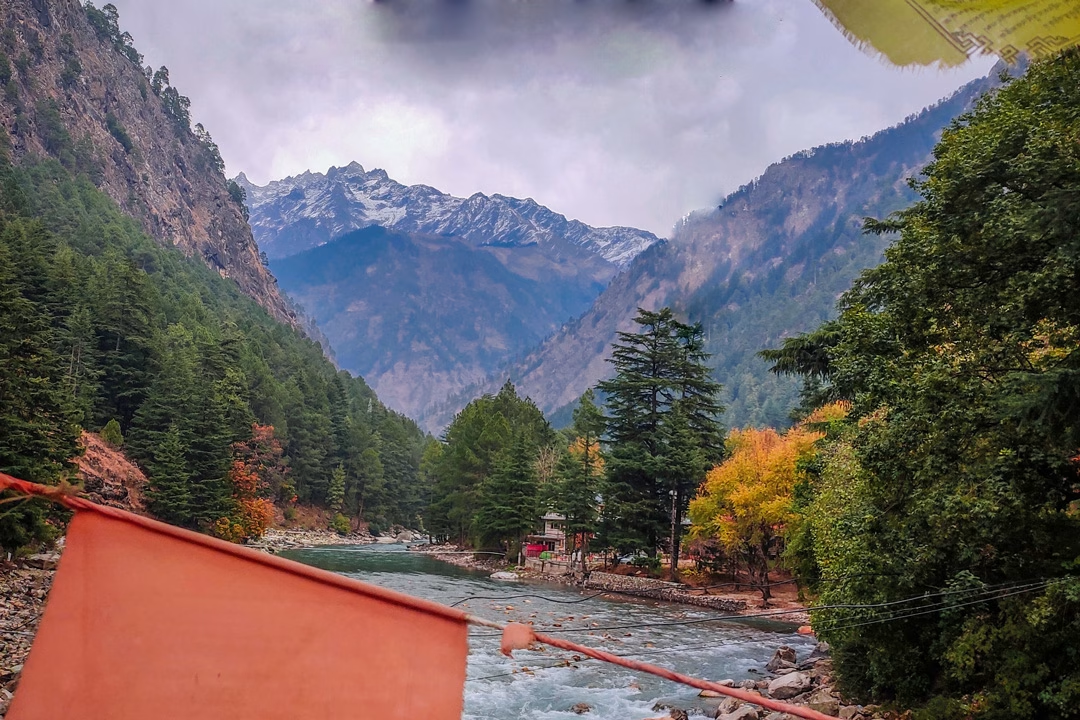
Dist: 81 km | Time: 2 to 4 hr | Altitude: 2050 m to 1580 m Today’s ride will be a short and scenic one of about 81 km. On your way to Kasol, you can experience the thrill of river rafting and paragliding in the beautiful Kullu Valley. Later in the evening, you’ll check into your hotel in Kasol and relax amidst the serene mountain vibes. Meals: Breakfast and Dinner Overnight: Stay at the hotel in Kasol.
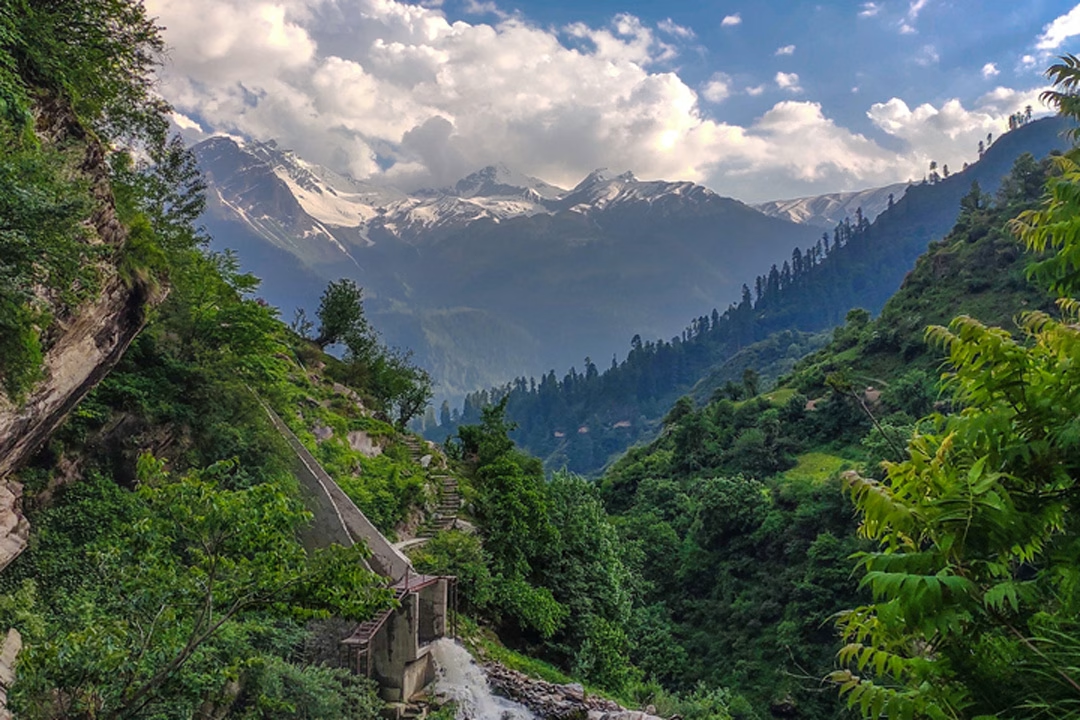
Trek Dist: 20 km | Time 5 to 7 hrs | Altitude: 1580 m to 2400 m After freshening up and enjoying a hearty breakfast, you will drive towards Barshaini and continue your journey towards Tosh. A short and pleasant 30-minute trek will lead you to your stay in Tosh, surrounded by breathtaking mountain views and peaceful village vibes. Meals: Breakfast and Dinner Overnight: Stay at Hotel/Camp in Tosh
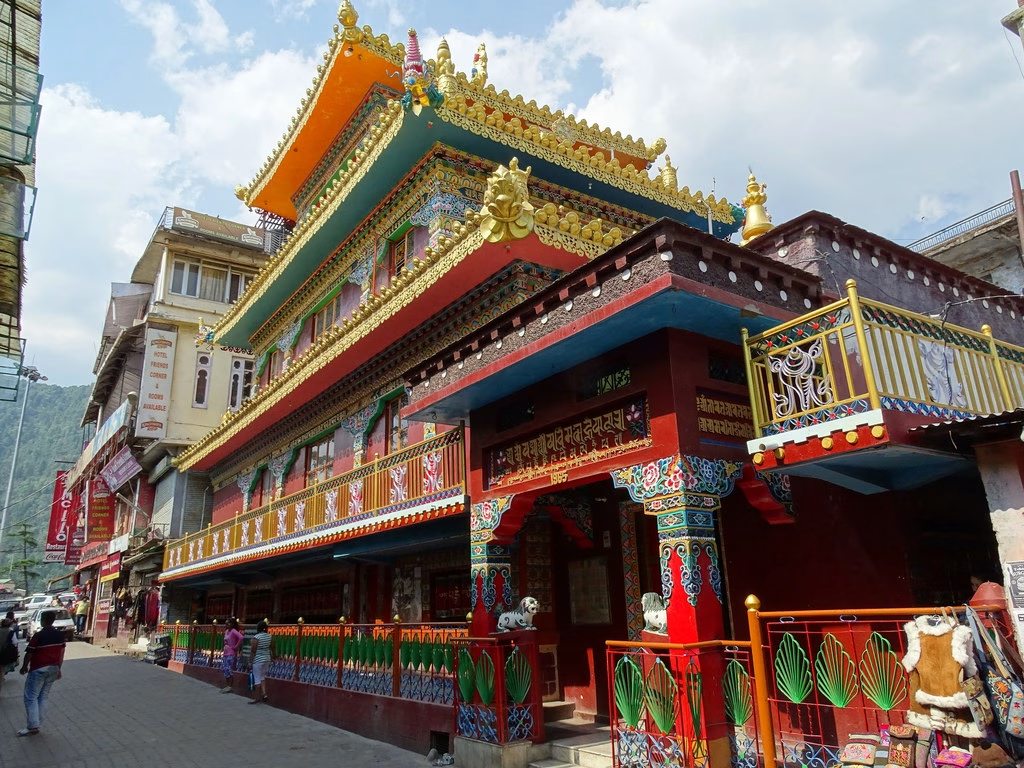
Dist: 160 km | Time 6 to 8 hrs | Altitude: 2400 m to 1525 m You’ll drive towards Bir Billing, one of the world’s most renowned destinations for paragliding, nestled amidst the majestic Dhauladhar Ranges. Start your journey early in the morning to ensure you reach Bir Billing on time and make the most of the day’s adventure. Meals: Breakfast and Dinner Overnight: Stay at the Hotel in Bir
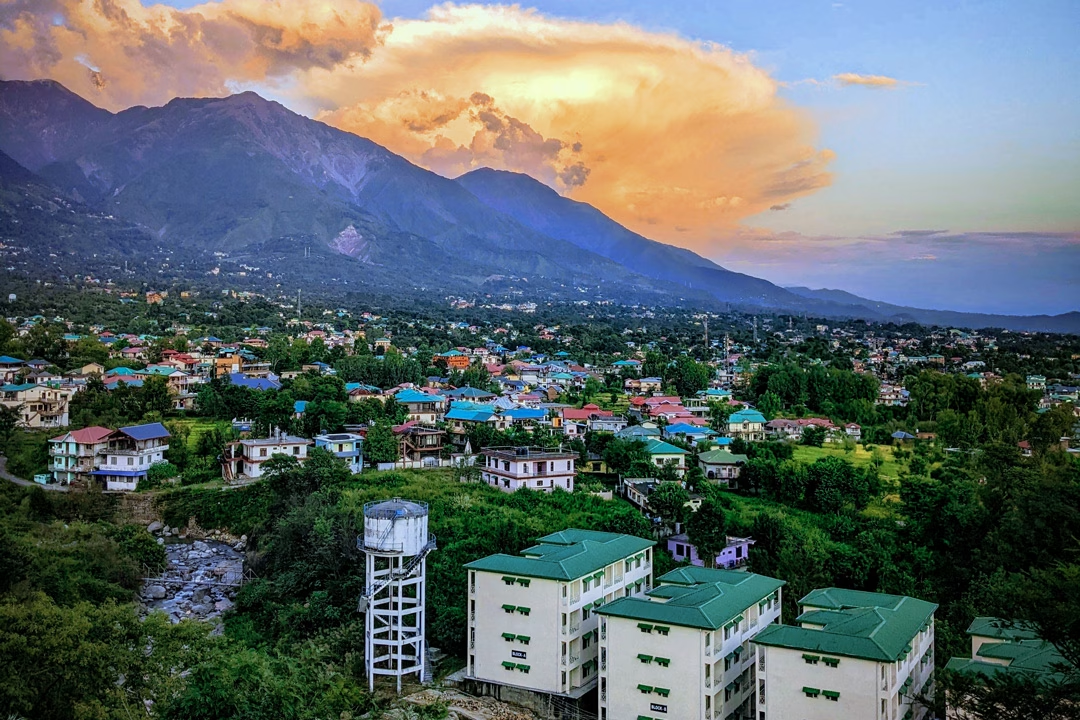
Dist: 75 km | Time 2 to 3 hrs | Altitude: 1525 m to 1500 m Wake up early to enjoy an unforgettable paragliding experience over the stunning Bir Valley. Later, you’ll depart for Dharamshala, where you can explore popular attractions such as the Dalai Lama Temple, Dal Lake, Naddi Viewpoint, Tea Gardens, St. John’s Church, and the scenic HPCA Cricket Stadium. Meals: Breakfast and Dinner Overnight: Stay at the Hotel in Dharamshala
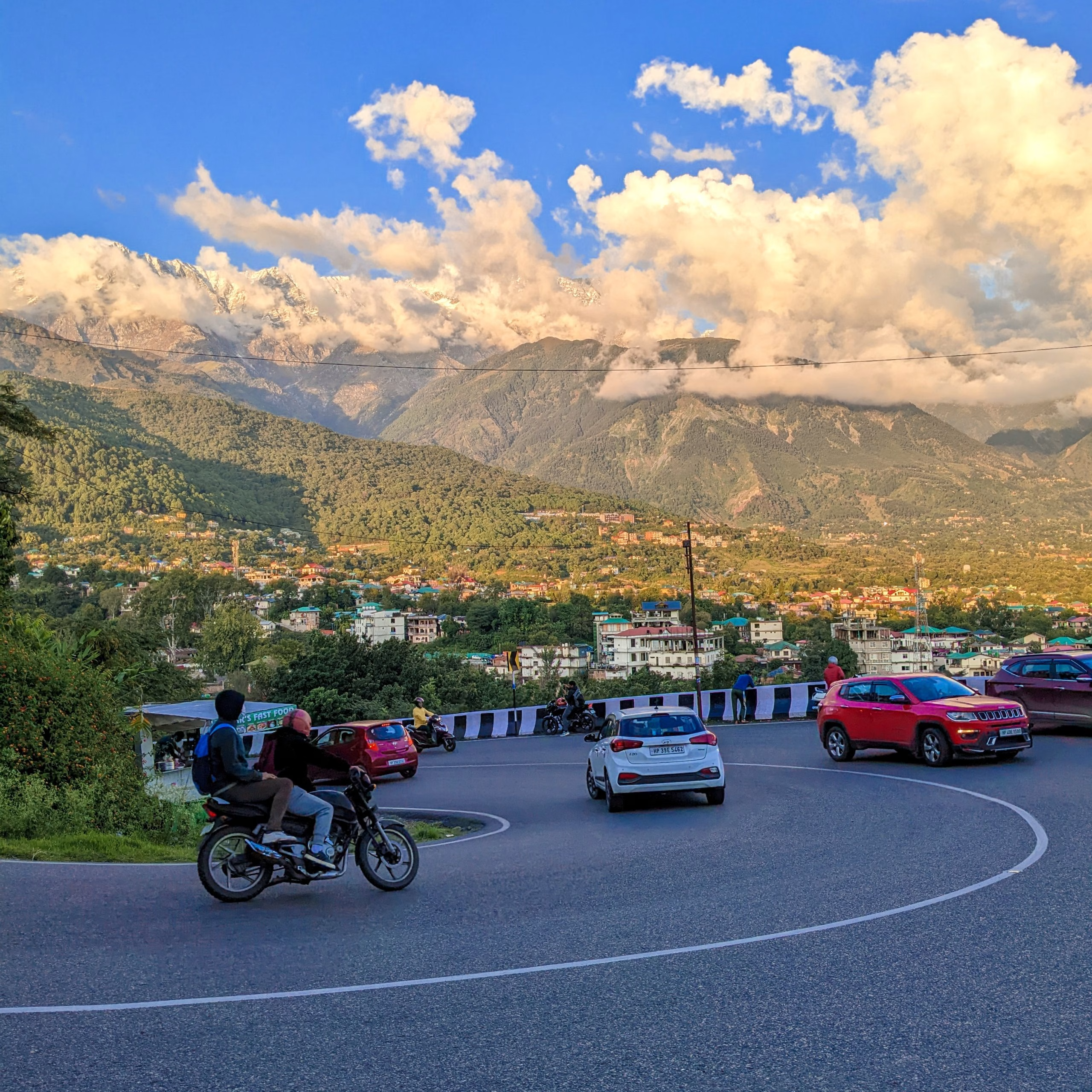
Sightseeing Time: 4 to 6 hrs Today, you will take a short trek to Bhagsu Waterfall and spend some time at Shiva Cafe. You can explore local markets, sample Tibetan cuisine, or shop for local items in the evening. Meals: Breakfast and Dinner Overnight: Stay at the Hotel in Dharamshala
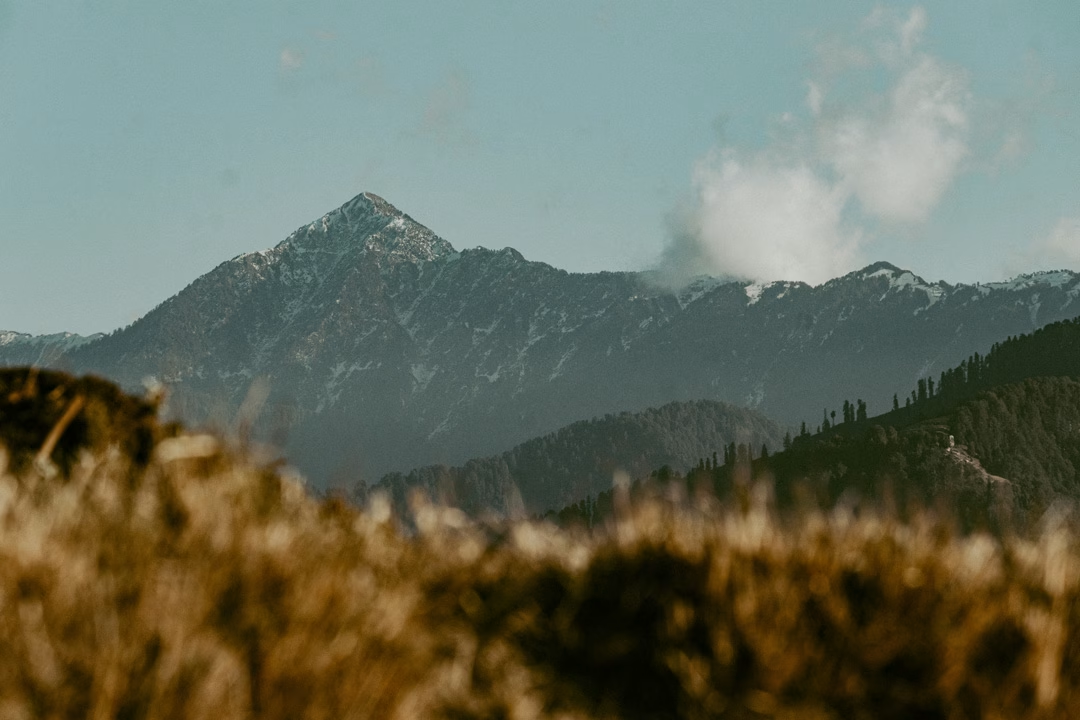
Distance: 118 km | Time: 5 to 7 hrs | Altitude: 1500 m to 1970 m After breakfast, you’ll depart for Dalhousie, a beautiful hill town known for its colonial charm. The drive will take around 6 hours. Upon arrival, check into your hotel and spend the evening exploring the vibrant local markets of Dalhousie. Meals: Breakfast and Dinner Overnight: Stay at the Hotel in Dalhousie/Khajjiar
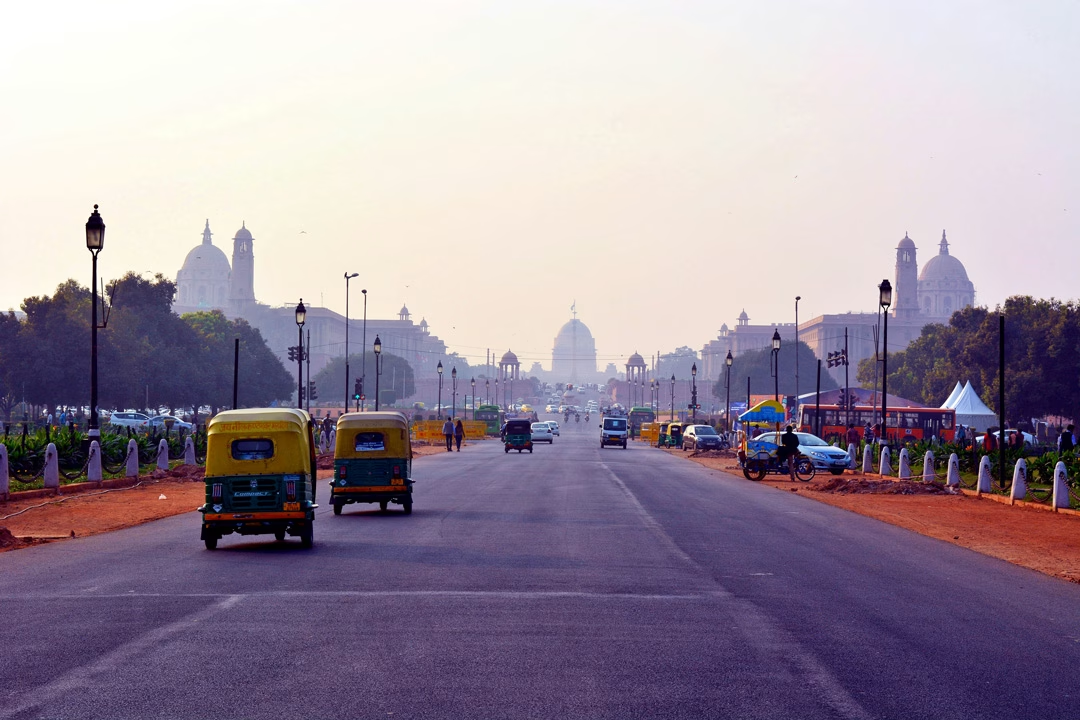
Checkout: 11:00 am | Sightseeing Time: 2 to 4 hrs Today, you will check out of the hotel and visit Chamera Lake View Point. The Chamera Dam created an artificial reservoir on the Ravi River. After spending time at this lake, you will set off for Delhi. Meals: Breakfast Overnight: Journey by Volvo Bus or Cab
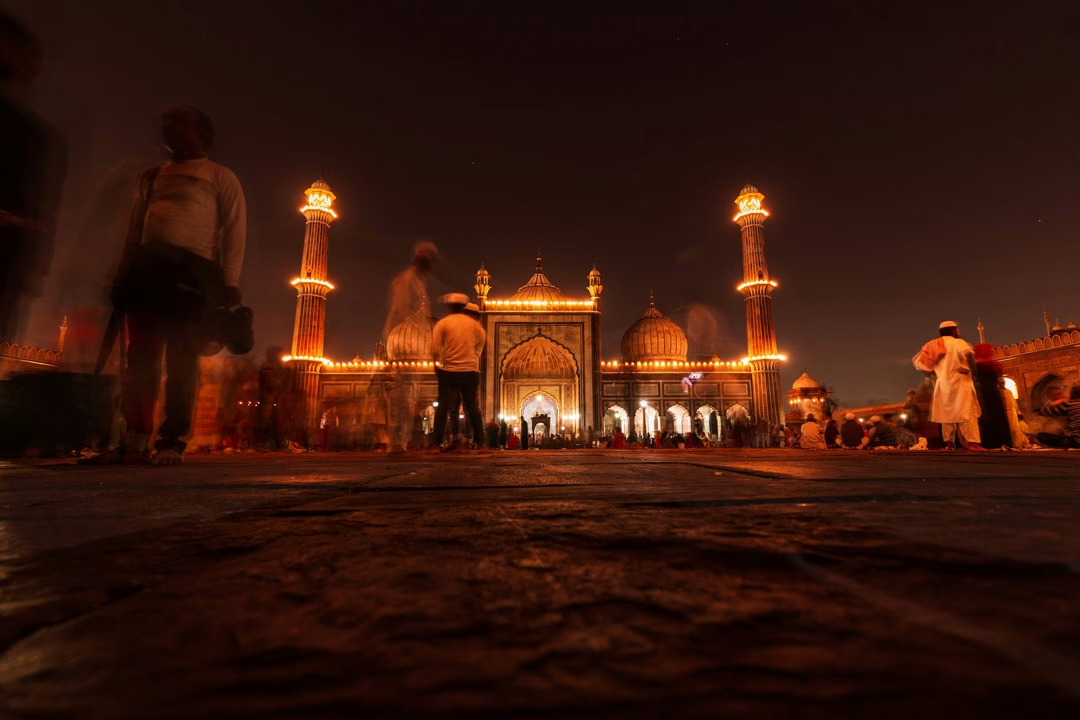
Dist: 576 km | Time: 12 to 14 hrs | Altitude 1970 m to 206 m With your heart full of joy and your mind refreshed, you’ll carry beautiful memories to cherish forever. The peace and happiness you experienced on this trip will keep you feeling positive and inspired. Meals: NIL Overnight: NA
| Location | Places to visit |
| Manali | Mall Road, Old Manali Van Vihar, Club House, Old Manali, Solang Valley, Jogini Waterfall (small trek), Vashisth Temple |
| Kasol | Parvati River, Manikaran Temple and Gurudwara, and Manikaran Hot Water Springs. |
| Tosh | Parvati Valley, Tosh Waterfall, Kutla |
| Dharamshala | Mall Road, McLeodganj, Tibetan Market, Bhagsu Temple, Bhagsu Waterfalls, Naddi, Dal Lake, Namgyal Monastery, Dalai Lama Temple, St John Church |
| Bir Billing | Landing Site, Take-off Site, |
| Dalhousie | Khajjiar, Kalatop Wildlife Sanctuary, Dain Kund, St. John Church, Chamera Dam, St. Francis Church, Beeji’s Park. |
Notes:
Notes:
We understand that plans can change, but the booking amount is non-refundable due to the costs we incur in preparing for your tour or activity. If you wish to reschedule for a different date, we'll adjust it to the same package, providing you with the necessary flexibility. If you have paid the total amount but cancelled the package. You will be provided with a refund, as mentioned below:
Tours or activities may be cancelled due to unforeseen events beyond our control, weather conditions such as heavy rain or storms, or government restrictions like sudden closures of specific areas. In such a scenario, we will provide an alternate tour or activity. However, no refunds will be provided.
Manali, a picturesque resort town in Himachal Pradesh’s Kullu District, is renowned for its stunning Himalayan landscapes and vibrant tourism. At an altitude of 2,045 meters, it offers breathtaking valley views and a range of attractions, including the Beas River, lush valleys, and snow-capped peaks. Manali’s appeal surged in the 20th century, with the British colonisers captivated by its cool climate and beauty. The town’s legend traces back to the seventh Manu, Varvasvata, who saved himself from a deluge with the help of a divine fish. Manali’s diverse topography encompasses a range of activities and sites, such as the Hadimba Temple, the serene Brighu Lake, and the famous Rohtang Pass, which serves as a gateway to Lahaul and Leh. Popular excursions include trekking to the Arjun Gufa and Bijli Mahadev Shrine, exploring the nearby villages of Naggar and Kasol, and visiting the Vashist Hot Springs. Manali also boasts the Great Himalayan National Park Tibetan monasteries, offering cultural insights and handicrafts. With a climate that varies from 25°C in summer to -14.5°C in winter, the best times to visit are from April to mid-July and September to November. The town’s charm is amplified by its vibrant festivals, diverse wildlife, and outdoor activities like skiing in Solang Valley and river rafting.
Kasol, nestled in the serene Parvati Valley of Himachal Pradesh, is a charming village renowned for its stunning natural beauty and tranquil ambience. Located approximately 32 km from Bhuntar and 500 km from Delhi, Kasol has evolved from a hidden gem for hippie backpackers to a popular weekend destination for travellers from Delhi and Chandigarh. Surrounded by alpine and coniferous forests with the Parvati River flowing through, Kasol offers a range of experiences, from relaxing in cosy cafes to embarking on thrilling treks such as Kheerganga and the Pin Parvati Pass. The village is known for its unique blend of Himalayan traditions, vibrant cultural scene, and the occasional rave parties. Kasol’s climate varies from pleasant summers (15°C to 30°C) to cold winters with snowfall, making it a year-round destination with each season offering its scenic charm. Visitors can easily reach Kasol via Bhuntar Airport, by road from major cities, or by train with a transfer. Attractions include Chalal and Tosh villages, the Parvati River, and Manikaran Sahib, which has hot springs and gurudwara. Kasol’s rich natural environment is complemented by its diverse flora, including pine trees and exotic flowers, and its local economy is bolstered by apple and hash cultivation.
Tosh, a picturesque village perched at 7,874 feet in Himachal Pradesh’s Parvati Valley, offers breathtaking natural beauty and a serene ambience. Nestled alongside the Tosh River, which originates from the Tosh Glacier, this tranquil village is renowned for its snow-capped peaks, lush greenery, and traditional Himachali architecture. Visitors are drawn to Tosh for its outdoor activities, including strolls, bird-watching, and challenging treks such as Kheerganga, Kutla, and Sar Pass. The village’s climate varies from cold winters with snowfall to temperate conditions perfect for trekking from April to June. Tosh’s appeal is amplified by its welcoming, warm-hearted locals and a vibrant blend of cultures. The culinary scene features local Himachali dishes and international favourites in cosy cafes, which often transform into lively hubs in the evening. The fashion in Tosh reflects a fusion of traditional Himachali attire with bohemian styles, promoting sustainable and upcycled clothing. The local markets are rich with handmade crafts and traditional garments, providing unique souvenirs and supporting local artisans. Tosh also maintains its hippie culture, with an open-minded, relaxed atmosphere that contrasts with modern life.
Bir Billing, located in the northeastern part of Himachal Pradesh, is renowned as the paragliding capital of India. Nestled in the Kangra district bordering Mandi, this region comprises several small villages, including Bir, Billing, Chougan, Ghodnala, Keyori, Kotli, Gunaid, Bhattu, Bari, and Danadi. Situated about 30 km from the town of Palampur, Bir Billing offers breathtaking views of the Himalayas and lush green landscapes. Known for its exceptional paragliding conditions, it hosted the Paragliding World Cup in 2015 and continues to attract adventure enthusiasts from around the globe. Its two main sites characterise the area: Billing, the takeoff point at an elevation of 2,300 meters, and Bir, the landing site at 1,400 meters. Apart from paragliding, Bir Billing provides a range of activities, including camping, trekking, and exploring the nearby Tibetan monasteries. The ideal time for paragliding is from October to June, with the best conditions observed in October and November. The summer months from April to June are exceptionally favourable, offering clear skies and mild temperatures, while the monsoon season from mid-June to September is less suitable due to increased rainfall. Winter brings sub-zero temperatures and heavy snowfall, making it less ideal for outdoor activities.
Dharamshala also serves as the winter capital of Himachal Pradesh, making it the state’s second capital. Situated in the highlands of the Kangra Valley, it is surrounded by dense coniferous forests, mainly comprising Deodar cedar trees. It encompasses several suburbs, including McLeod Ganj, Bhagsunath, Dharamkot, Naddi, and others, each adding to its charm. Established on May 6, 1867, as one of the oldest municipalities in the region, it was declared the headquarters of Kangra District in 1855. Historically, Dharamshala was a British hill station, later becoming an essential base for the Indian Army in the mid-19th century. Its significance surged in 1959 when the 14th Dalai Lama and Tibetan refugees settled here, transforming the town into a centre for Tibetan culture and spirituality. Dharamshala’s upper part, including McLeod Ganj, is known for its Tibetan exile administration and Buddhist monasteries. Between 1450 and 2210 meters above sea level, Dharamshala is well-connected by road and air to major cities like Shimla, Kullu, and Delhi. This picturesque town, with its diverse offerings, from British-era architecture and vibrant Tibetan culture to natural beauty and adventure sports, continues to attract tourists and spiritual seekers worldwide.
Dalhousie, a hill station located in the Chamba District of Himachal Pradesh, India, was founded by the British in 1854 as a summer retreat for their officials and troops. It was named after Lord Dalhousie, the British Governor-General of India. Nestled across five hills—Kathalagh, Potreyn, Terah, Bakrota, and Bhangora—Dalhousie sits at an altitude of 1,970 meters and offers breathtaking views of the snow-capped Dhauladhar, Kailash, and Pir Panjal ranges. Initially part of Punjab, the town was integrated into Himachal Pradesh in 1966. Known for its colonial-era architecture and serene landscapes, Dalhousie combines natural beauty with historical significance, featuring remnants of its British past alongside ancient temples and rich Pahari culture. The region features a humid subtropical climate, offering mild summers and crisp winters, making it an ideal destination for tourists year-round, whether they seek relaxation or adventure. The town’s charm is further enhanced by its educational institutions and vibrant local culture, which includes traditional Himachali music and dance, as well as Tibetan influences from recent settlements.
Yes, Manali is budget-friendly. It offers a range of affordable accommodations, dining options, and activities, making it accessible to various budgets.
To reach Manali by train, take a train to Chandigarh and then continue by bus or private taxi. Alternatively, you can take a train from Pathankot to Joginder Nagar and then reach Manali by cab or bus.
Manali and Kashmir each offer unique experiences. Manali is known for its adventure sports, pleasant weather, and proximity to other attractions in Himachal Pradesh. Kashmir, known as the "Paradise on Earth," is celebrated for its breathtaking landscapes, beautiful gardens, and charming houseboats. Manali might be better if you prefer adventure and a range of activities; if you seek breathtaking natural beauty and serene landscapes, Kashmir could be more appealing.
In Manali, unique foods include: Babru: A flatbread stuffed with black bean paste, similar to a North Indian kachori. Chha Gosht: A flavorful meat dish served over rice. Siddu: A half-moon-shaped pie made with wheat flour and stuffed with mutton, peas, and condiments. Himachali Khatta: A sweet and sour pumpkin dish with dry mango powder. Momo: Dumplings that can be fried or steamed, often filled with meat or vegetables. Veg Thukpa: A noodle soup with hand-pulled noodles in a vegetable broth.
In Manali, the best items to buy include: Woollen Apparel: High-quality cardigans, mufflers, stoles, and gloves. Tibetan and Himalayan Handicrafts: Mohras (deity masks), ornaments, and household items. Kinnauri & Kullu Shawls and Kullu Caps: Beautifully patterned shawls and traditional caps. Thangkas and Dorjes: Traditional Buddhist scroll paintings and ritual symbols. Prayer Wheels: Sacred items believed to bring good luck. Kesar (Saffron): High-quality saffron from Himalayan flowers.
Due to landslides, floods, and slippery roads, Kasol can be risky during the monsoon season (July–September). The mountainous terrain makes travel difficult, and natural disasters can be life-threatening. At night, there may be some safety concerns, especially with local drunk crowds, but Kasol is generally safer for solo women travellers compared to many other places in India.
Kasol is generally regarded as a safe destination for solo female travellers. It is noted for its welcoming atmosphere and the presence of many young visitors, which contributes to a safer environment.
Kasol's peaceful setting in the Parvati Valley makes it better for trekking and adventure. Mussoorie, a popular hill station, offers lush landscapes and panoramic views, making it ideal for a scenic getaway or honeymoon. Choose Kasol for tranquillity and adventure or Mussoorie for scenic views and a classic hill station experience.
In Kasol, the famous drinks include: Chai: A spiced tea with cardamom and ginger, commonly served at local cafes. Hot Chocolate: Best enjoyed at Cafe Sunshine. Israeli Coffee: A popular choice brought by the local Israeli community. Lugdi: Lugdi is a traditional Himalayan drink featured in "Yeh Jawaani Hai Deewani." Made from fermented rice or barley, it has a low alcohol content and is quite popular among tourists in Manali and Kasol.
| Package | Duration | Price |
| Manali Shimla Package | 5 Night 6 Days | ₹14,200/- |
| Manali Shimla Package | 4 Night 5 Days | ₹16,400/- |
| Manali Kasol Trip | 4 Night 5 Days | ₹12,800/- |
| Himachal Trip Package | 8 Night 9 Days | ₹22,600/- |
Shimla is an excellent choice if you prefer colonial charm and cultural attractions. For adventure sports and natural beauty, Manali is ideal. Both offer unique experiences, so your choice depends on whether you value history and ease of access or adventure and scenic landscapes.
Manali and Darjeeling each offer unique experiences. Manali is ideal for adventure seekers with its skiing slopes, Rohtang Pass, and nearby attractions like Kullu and Manikaran. Conversely, Darjeeling boasts a colonial charm with highlights such as Mall Road, tea estates, the Teesta River, and Tiger Hill. Manali is better if you prefer exciting outdoor activities and stunning Himachal views. For a charming hill station experience with tea gardens and scenic vistas, Darjeeling is the choice.
Food costs in Manali can vary based on your dining choice. At a local eatery, an essential meal typically costs ₹100 to ₹200. In more upscale or tourist-centric restaurants, a meal can range from ₹400 to ₹900 per person.
Yes, Kasol is safe for couples and singles alike. It provides a variety of affordable and high-quality accommodations, allowing you to explore the area confidently.
Tosh is worth visiting for its stunning natural beauty, peaceful atmosphere, and vibrant hippy culture. It's a great spot for trekking and backpacking in the Parvati Valley.
The Tosh Trek is easy and moderate in difficulty, making it suitable for beginners. The 4–5 km trail starts in Barsheni and involves a steep ascent with rocky terrain and dense forests. A reasonable fitness level is required, as you'll need to walk up to 10 km at a time.
Kasol is known as "Mini Israel" because of its significant Israeli tourist population and the blend of Israeli-Indian culture. It attracts backpackers and trekkers with its natural beauty, hippie vibe, and authentic Israeli cuisine, including falafel and shawarma.
Reliance Jio and Vodafone work well in Kasol. Airtel is available in Tosh, while only BSNL works in Kheerganga. In Kalga, both Airtel and BSNL are functional.
A 3-day trip to Tosh is generally sufficient to explore the village, trek to Tosh Waterfall, and visit nearby Pulga. A 5-day itinerary is also suitable for a more relaxed experience, including extra time in Kasol.
No, Tosh and Kasol are different villages in the Parvati Valley. While both are known for their natural beauty, Tosh has a more serene vibe and is famous for trekking, whereas Kasol is known for its vibrant atmosphere and backpacker scene.
Bir Billing is renowned as the "Paragliding Capital of India," with paragliding taking off from Billing and landing in Bir. It is also known for its Tibetan monasteries, spiritual studies, and ecotourism. The area hosts international paragliding events and offers year-round flying opportunities, with the peak season from September to October.
The ideal time to visit Bir Billing is from March to June, as the weather is pleasantly mild and perfect for outdoor activities and paragliding. Spring and early summer offer ideal conditions with mild temperatures and vibrant landscapes. Autumn, from October to November, is also a great time, as the region is clean and the skies are clear, making it suitable for paragliding. It's best to avoid the monsoon season due to heavy rains and potentially risky conditions for paragliding.
Bir is famous for being the "Paragliding Capital of India," attracting adventure seekers with its stunning landscapes and ideal paragliding conditions. It is also known for its Tibetan refugee settlement, featuring Buddhist monasteries and a large stupa, and serves as a hub for ecotourism, spiritual studies, and meditation.
Yes, paragliding in Bir Billing is generally safe. The area is known for its excellent flying conditions and has experienced operators and instructors to ensure a secure experience.
Yes, Bir does experience snowfall, typically during the winter months from December to February.
Dharamshala is famous for its Tibetan culture. It houses McLeod Ganj, the Tibetan capital-in-exile and residence of the 14th Dalai Lama. The area features prominent monasteries, including the Dalai Lama Temple, and offers natural beauty and adventure activities.
Dharamshala and Manali both have their unique charms. Dharamshala is ideal for those interested in Tibetan culture and spirituality, as it has monasteries, temples, and a vibrant cafe culture. It's also famous for trekking and other activities. Conversely, Manali is better for adventure sports and outdoor activities, offering stunning scenery and more options for adventure, including skiing and river rafting. While Manali is known for its scenic beauty, Dharamshala excels in cultural experiences and adventure activities.
Yes, Dharamshala does experience snowfall, typically from December through February. During this period, the area enjoys freezing temperatures and snow-covered mountains, offering a picturesque winter landscape.
Dharamshala is known for a variety of local dishes: Tudkiya Bhath: A Pahadi rice dish cooked with spices, lentils, and yoghurt. Chha Gosht: Marinated lamb meat cooked with traditional spices. Thukpa: A hearty noodle soup in meat, vegetarian, egg, and tofu versions. Madra: A dish made from soaked chickpeas, yoghurt, paneer, and spices. Siddu: A steamed wheat flour bread filled with meat or vegetables. Dhaam: A festive meal including rajma, rice, cottage cheese, and jaggery. Bhey: Lotus stem cooked with gram flour and spices. You can also find unique items like Sushi and Carrot Cake in some restau
In Dharamshala, the primary languages spoken are Kangri, Gaddi, Tibetan, and Pahari. Hindi and English are also commonly used, especially in tourism.
The distance from Delhi to Dalhousie is approximately 550 kilometres (342 miles) by road. Depending on traffic and road conditions, the journey typically takes 11 to 12 hours.
Dharamshala is better for Tibetan culture, adventure activities, and stunning mountain views, while Dalhousie is ideal for its colonial charm, serene environment, and scenic beauty.
Three days are generally sufficient to explore Dalhousie. If you want to see more, you can extend your visit by adding a trip to nearby Chamba town.
Dalhousie is famous for its colonial architecture, picturesque landscapes, and serene environment. Known for its charming streets, lush green hills, and pleasant weather, it offers a peaceful retreat. The town is also famous for Khajjiar, often called the "Mini Switzerland" of India, and is known for its breathtaking meadows and picturesque scenery.
Dalhousie is during the summer and winter months. Summers (March to June) offer pleasant weather, perfect for exploring. Winters (November to February) bring charming snowfall and chilly weather, ideal for those who enjoy cold temperatures and a winter wonderland experience.
Khajjiar, situated near Dalhousie, is often referred to as the "Mini Switzerland of India" because of its stunning landscapes, which resemble the scenic beauty of Switzerland. It’s a popular spot for visitors looking to experience European charm in the Indian Himalayas.
Leave a review